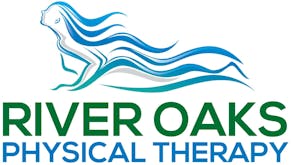Our Chief Therapist in charge Teresa A. Atkinson PT, MDT is certified in the McKenzie Method® of Mechanical Diagnosis and Therapy® (MDT).
Attainment of the Credentialing Certificate indicates that the practitioner has met predetermined requirements established by The McKenzie Institute International and the Board of Directors of The McKenzie Institute USA. This would include having completed a four-part series of post-graduate courses and passing a written and practical Credentialing Examination recognizing basic competency in Mechanical Diagnosis and Therapy.
She is an active member on the MIUSA referral directory, a policy was established in 2006 that all Certified MDT clinicians are required to maintain continuing education through the Institute approved programs to better ensure the continuance of a high level of knowledge and skill in the application of MDT. The McKenzie Institute International explains the importance of MDT Professional Development for Certified MDT clinicians.
The McKenzie Institute USA describes “McKenzie Method” as follows:
https://www.mckenzieinstitute.org/patients/what-is-the-mckenzie-method/
The McKenzie Method® of Mechanical Diagnosis and Therapy® (MDT) is an internationally acclaimed method of assessment and treatment for spinal and extremity pain developed by New Zealand Physiotherapist Robin McKenzie. It has been widely used all over the world for more than 30 years.
MDT is a philosophy of active patient involvement and education that is trusted and used by clinicians and patients all over the world for back, neck and extremity problems. This approach continues to be one of the most researched physical therapy based methods available.
A key feature is the initial assessment – a safe and reliable way to reach an accurate diagnosis and only then make the appropriate treatment plan.
In its truest sense, MDT is a comprehensive approach based on sound principles and fundamentals that, when fully understood and followed, is very successful.
MDT begins with the clinician taking a detailed history about your symptoms and how they behave. You will be asked to perform certain movements and rest in certain positions. The main difference to most other assessments is the use of repeated movements rather than a single movement. How your symptoms and range of movement changes with these repeated movements provides the clinician with information that they can use to categorize your problem.
Using the information from the assessment, the clinician will prescribe specific exercises and advice regarding postures to adopt and postures to temporarily avoid. If your problem has a more difficult mechanical presentation, a qualified MDT clinician may need to add hands-on techniques until you can self-manage. The aim is to be as effective as possible in the least number of sessions. Treatment that you can perform five or six times a day is more likely to be effective in a shorter period of time than treatment administered by the clinician once or twice per week. The emphasis is on you, the patient, being actively involved. This can minimize the number of visits to the clinic. Ultimately, most patients can successfully treat themselves when provided with the necessary knowledge and tools.
By learning how to self-treat the current problem, you gain knowledge on how to minimize the risk of recurrence. You can also rapidly deal with symptoms if they recur, putting you in control of your treatment safely and effectively. Persisting problems are more likely to be prevented through self-maintenance than by passive care.
